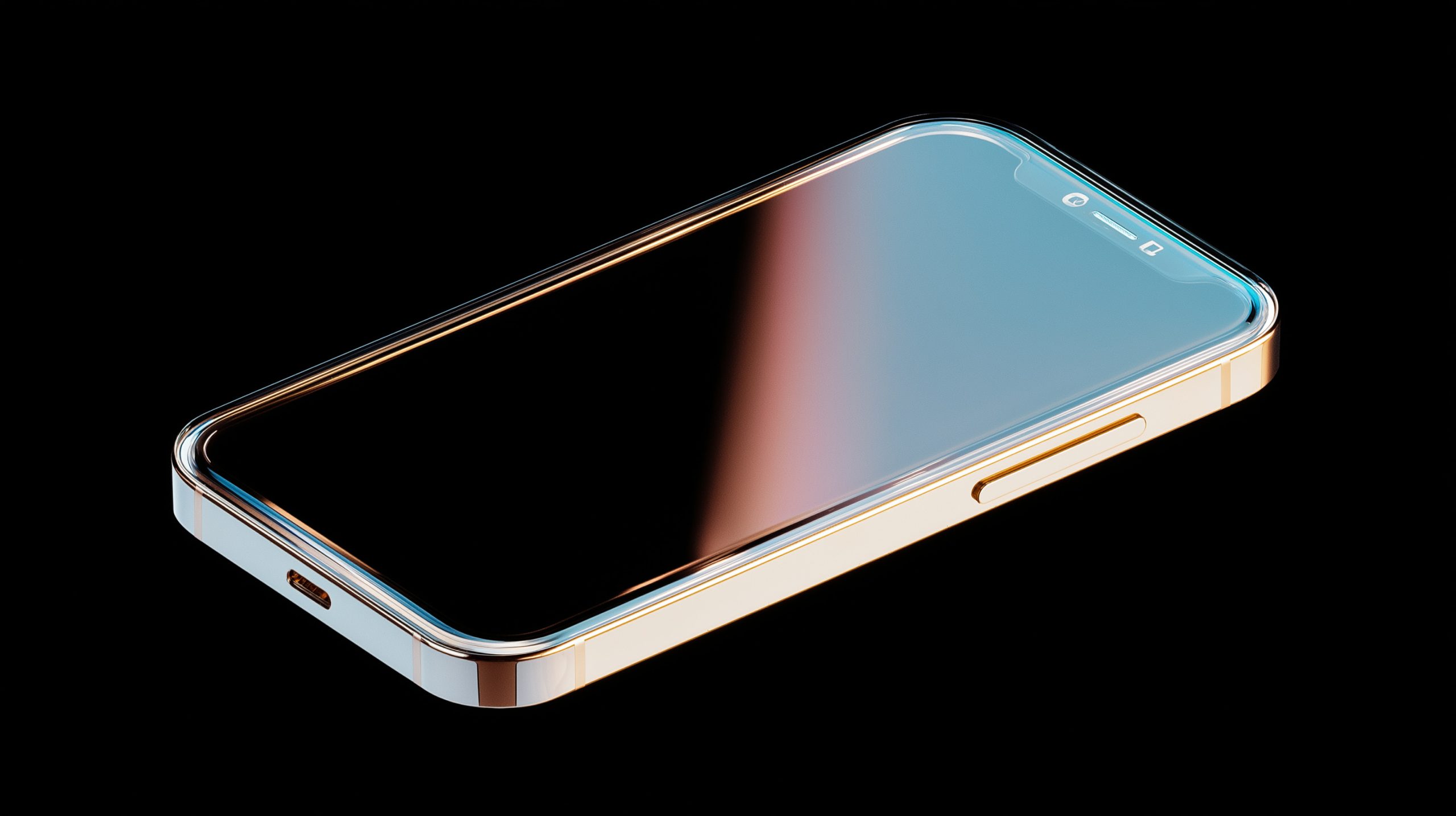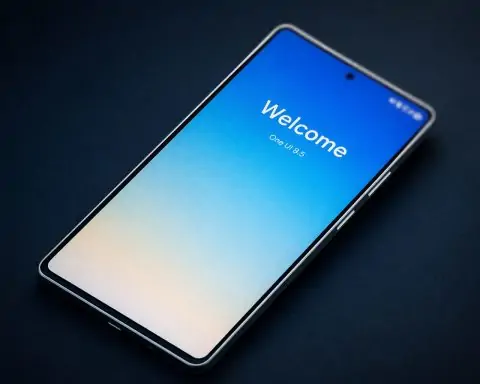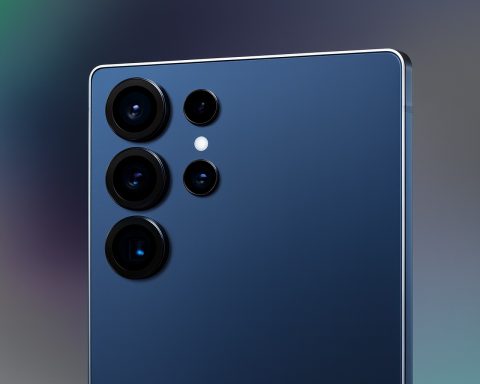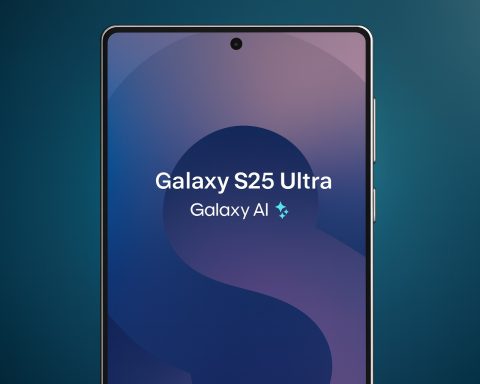Key Facts
- Apple’s record launch: Apple’s new iPhone 17 series (including an ultra-thin iPhone Air) launched this week and saw blowout pre-orders in China, surpassing last year’s first-day sales within minutes [1]. The 5.6 mm-thin iPhone Air wowed fans [2] but remains unavailable in China pending eSIM approval by regulators [3]. Apple confirmed iOS 26 (next iOS release) will roll out on Sept. 15, bringing a fresh “Liquid Glass” UI and smarter AI-driven suggestions [4] [5].
- Samsung’s new Galaxy & leaks:Samsung quietly unveiled the Galaxy S25 FE at ~$650, offering a free storage upgrade to 256 GB and even $100 gift card bundles on Amazon [6] [7]. Looking ahead, leaks suggest the Galaxy S26 Ultra will keep the S Pen after all [8] [9] – easing fans’ fears that Samsung might drop the stylus. Another rumor hints Samsung could launch two Galaxy Z Fold models in 2026, including a “Wide Fold” with a nearly square 18:18 inner display [10]. A tri-folding phone prototype also surfaced in leaked animations [11] [12], stoking excitement for futuristic foldables.
- Android ecosystem updates:Google’s Pixel 9 series propelled Google to become the fastest-growing premium smartphone brand in H1 2025 with 105% year-over-year growth [13]. (Premium phone sales overall rose ~8%, with 80% of high-end models touting GenAI features [14].) Google’s share is still small – Apple leads with 62% of premium segment revenue [15] – but it highlights Pixel’s momentum. On software, Android 16’s September Feature Drop landed for Pixel users, bringing Material You “Expressive” theming and the return of an AI-powered Androidify avatar tool [16]. Meanwhile, Xiaomi’s new HyperOS 3 (Android 15) is rolling out with a revamped “liquid glass” look and camera upgrades, though the company confirmed 31 older Xiaomi/Redmi models won’t get Android 16 beyond this update [17] [18].
- Market rebounds & insights: Fresh data shows a global smartphone market rebound. Q2 2025 smartphone production topped 300 million units – up ~4.8% from last year [19] – as manufacturers cleared inventory gluts (helped by China’s subsidies on budget phones) [20]. Samsung remained the #1 producer (58 M units, 19% share), followed by Apple (46 M, 15% share) [21]. Notably, Xiaomi climbed with 42 M units (14% share) on strong sales in Asia, and Oppo (with OnePlus/Realme) saw a 35% QoQ production jump [22]. In retail news, Apple’s iPhone 17 is off to a strong start: Analysts report iPhone 17 pre-orders in China broke all previous records [23], with one popular retailer (JD.com) racking up more first-hour orders than the entire first day of iPhone 16 pre-sales [24].
- Mobile tech innovations: The period saw big leaps in hardware tech. Chipmaker Qualcomm announced a special event later this month to unveil its next-gen Snapdragon 8 Elite Gen 5 processor, moving the flagship chip launch up to September [25] (likely to power 2026’s Android flagships). Battery tech is in focus too: Oppo is launching its F31 mid-range phone on Sept. 15 with a massive 7,000 mAh battery and 80 W fast charging [26] [27] – one of the largest capacities in a mainstream handset. On the premium end, OnePlus 15 leaks tease a 6.7-inch AMOLED display with an ultra-fast 165 Hz refresh rate (higher than even the new iPhone’s 120 Hz) and a redesigned build, though the brand might drop its traditional white color option [28] [29]. These innovations underscore the industry’s push toward faster, smarter, and longer-lasting smartphones.
Apple: iPhone 17 Frenzy and iOS Updates
Apple’s big September launch – dubbed the “Awe-dropping” event – introduced the iPhone 17 lineup on September 9. This year Apple added a completely new model, the iPhone 17 Air, a super-slim 5.6 mm smartphone designed as a successor to the Plus [30]. Despite its impossibly thin profile, Apple claims the iPhone Air still achieves “great” all-day battery life [31] thanks to design tweaks (CEO Tim Cook noted they extended the battery into space freed by the eSIM-only design [32]). The Air and its siblings (iPhone 17, 17 Pro, 17 Pro Max) feature refinements like the A19 Bionic chip and a new camera system – including a “CenterStage” adaptive camera that can automatically reframe shots in either orientation [33]. Notably, Apple also raised base storage across the board to 256 GB this generation [34], while holding prices steady [35], which analysts say follows Google’s value-pricing strategy for Pixel [36].
Early reception has been strong. In China – one of Apple’s most challenging markets – the iPhone 17 broke preorder records [37]. Within one minute of preorders opening on retailer JD.com, sales exceeded the entire first day volume of last year’s iPhone 16 [38]. The 256 GB iPhone 17 (non-Pro) was the most popular configuration [39], and demand was so high that Apple’s own China webstore struggled (some users reported 5-minute payment processing delays due to traffic) [40]. In-person pickup slots for the iPhone 17 Pro Max in Shanghai sold out within 20 minutes on preorder day [41]. This blockbuster launch comes despite a hiccup: Apple’s first-ever eSIM-only model, the iPhone Air, is temporarily barred from sale in China until regulators approve its embedded-SIM design [42]. (All Chinese carriers support eSIM in principle, and Apple is working with authorities to green-light the Air soon [43].) Analysts like IDC’s Nabila Popal commend Apple’s strategy of segmenting the lineup – from the affordable Air to the camera-centric Pro Max – which “ensures each model appeals to specific user needs,” driving a new wave of upgrades [44].
On the software side, Apple has the ecosystem ready for the new devices. It confirmed the official rollout of iOS 26 (the latest iPhone OS) will begin September 15 [45], just ahead of the iPhone 17’s retail release. This update – which comes preloaded on the new phones – brings a “liquid glass” design aesthetic and smoother animations for a more polished feel [46] [47]. Apple is also boosting on-device intelligence: the update greatly enhances “Apple Intelligence” (likely an improved Siri and Suggestions engine) with smarter prompts and faster app behavior [48] [49]. Early reviews highlight quality-of-life tweaks focusing on usability: menus and multitasking have been streamlined to require fewer taps [50], and core apps like Phone and Messages gain new features (e.g. smart call screening to handle unknown callers [51]). Importantly, Apple isn’t leaving older customers behind – iOS 26 supports devices back to iPhone 11 and SE (2020) [52]. This broad support, combined with the new iPhones’ buzz, sets the stage for one of Apple’s biggest upgrade cycles in recent years. As one industry commentator put it, “This is the first iPhone generation in a while where it’s good news across the board” [53].
Samsung: Galaxy S25 FE Debuts, S26 and Foldable Leaks
Samsung, Apple’s fiercest rival, made some news of its own during this period – both in product launches and tantalizing leaks. On the product front, Samsung has quietly released the much-anticipated Galaxy S25 FE (“Fan Edition”). Rather than a flashy Unpacked event, the launch came via online listings and retailer promotions. The S25 FE aims to deliver near-flagship specs at a lower price point (around $649 unlocked). Notably, Samsung is sweetening the deal with promotions: for example, Amazon is offering a free storage upgrade (256 GB for the price of 128 GB) plus a $100 gift card with S25 FE orders [54] [55]. The phone comes in four colors and carries a 6.7-inch AMOLED display (with 120 Hz refresh), a triple camera setup, and the same Exynos 2400/Snapdragon 8 Gen 2 chip as the standard S25 – making it one of the best value phones in Samsung’s lineup this year.
While the S25 FE fills out this year’s roster, rumors about Samsung’s 2026 flagships are already swirling. Tech insiders were abuzz over a leak from renowned tipster Ice Universe suggesting that the next ultra-premium Galaxy, the S26 Ultra, will indeed retain the S Pen stylus [56] [57]. Previously, fans feared the S Pen might be on the chopping block as Samsung pursues ever-slimmer designs – especially after Samsung removed the Bluetooth features from the S Pen in the current S25 Ultra and dropped S Pen support entirely on the new Fold 7 to slim it down [58]. The latest leak, however, shows alleged S26 Ultra renders with the familiar built-in S Pen slot [59], signaling Samsung isn’t abandoning the stylus to appease its power-user base. If true, the S26 Ultra in early 2026 will continue the Galaxy Note legacy of pen input, even as competitors focus solely on touch.
Samsung’s foldable phone plans also made headlines. With the Galaxy Z Fold 7 and Flip 7 just released this summer, Samsung reportedly is “scrambling to make more” due to higher-than-expected demand for the ultra-slim Fold 7 [60]. Perhaps as a response to the foldables’ success, an internal source leaked Samsung’s development roadmap hinting at two different Fold models in 2026 [61]. In addition to the conventional Galaxy Z Fold 8, Samsung is allegedly working on a second foldable codenamed a “Wide Fold.” This device would combine two 18:9 aspect ratio panels into a nearly square 18:18 inner display – essentially a foldable that opens into a tablet-like square screen [62]. The Wide Fold concept sounds like a book-style foldable optimized for productivity and large-screen experiences. According to the leak, Samsung hopes to finalize the dual-Fold design by end of September and could launch the Wide Fold alongside the Z Fold 8 and Flip 8 in 2026 [63]. Adding fuel to the fire, a leaked demo animation of a tri-folding Samsung device recently circulated on tech forums, showing a smartphone-sized device unfolding in two hinges to a full tablet form [64]. Samsung has showcased tri-fold display concepts before, but seeing an apparent marketing animation suggests such a product might be closer to reality than expected. While Samsung hasn’t confirmed any of these plans, the leaks have experts predicting that 2025–2026 could see Samsung expanding its foldable portfolio – possibly an answer to rival form factors and to maintain its dominance as foldable adoption grows.
Google & Android: Pixel’s Growth, Updates from Xiaomi and More
Over in the Android camp, Google’s Pixel phones earned a spotlight in a new market report. According to Counterpoint Research data, Google achieved a 105% year-on-year surge in premium smartphone sales in H1 2025 [65] – making it the fastest-growing premium brand (devices priced above $500). This Pixel 9–fueled growth spurt effectively doubled Google’s high-end sales from the previous year [66]. It’s an impressive feat credited to Google’s expanded marketing and unique AI-driven features in Pixel phones [67]. The Pixel 9 series’ AI capabilities (from call screening to photo magic and assistants) have resonated with consumers, validating Google’s strategy to compete on software smarts as much as specs [68]. To put the numbers in perspective, the premium segment is still dominated by Apple – which holds about 62% of global premium share (with minimal growth, as its base is already huge) [69]. Samsung is second at around 34% share (seeing ~7% YoY growth, thanks to its AI-enhanced Galaxy S25 lineup) [70]. Google’s share remains in the single digits, but climbing. Industry watchers note that 80% of premium phones launched this year advertise GenAI features like intelligent voice assistants, imaging AI, etc. [71] – indicating the high-end market is pivoting to AI-centric devices, an area where Google’s Android ecosystem has an edge.
In terms of software updates, Android users saw some notable releases in early September. Google rolled out its September Feature Drop for Android 16, coinciding with the monthly Pixel security patch [72]. This update (essentially Android 16 QPR1) introduced Material You “Expressive” theming, giving users more dynamic color and style options in the interface [73]. It also brought back Androidify, a fun avatar-generator app now rebuilt with AI – allowing Pixel owners to create personalized cartoon “Android bot” avatars using AI suggestions [74]. Under the hood, Google also included improvements to connectivity, and early testers noted bug fixes that improve system stability [75]. Outside Google’s own phones, many Android OEMs are preparing to deploy Android 16. In fact, Qualcomm is ahead of schedule, announcing an event on Sept. 27 to launch the next-gen Snapdragon 8 Elite Gen 5 chipset [76]. This 3 nm chip will power some late-2025 flagships and beyond, and its early debut means companies like Samsung, Xiaomi, and OnePlus can potentially release phones with the new silicon a bit sooner than usual.
Speaking of Xiaomi and OnePlus: Xiaomi has been busy on both hardware and software fronts. The Chinese giant’s latest interface, HyperOS 3, is now in beta and on track for a stable release by late September [77] [78]. HyperOS 3 is Xiaomi’s Android 15–based custom OS, featuring a fresh “liquid glass” UI aesthetic and big camera software improvements [79]. However, Xiaomi also publicized its update cutoff list: 31 older models (across Xiaomi, Redmi, and Poco brands) will not be updated to Android 16 and will stop at this HyperOS 3 release [80]. That list includes popular mid-rangers (like the Redmi Note 12/13 series and Poco F5) and even some past flagships (Xiaomi 12/12T series) [81]. Those devices will still get security patches, but no new OS after Android 15. Xiaomi’s policy is in line with industry norms (2–3 years of major updates), though it’s always tough news for users holding those phones. On a brighter note, Xiaomi’s current performance is strong – the company saw Q2 2025 revenues jump ~30% on the back of smartphone growth (especially in emerging markets) [82] [83], and it’s investing heavily in R&D (from smartphones to EVs) to keep competitive.
Meanwhile, OnePlus – now part of the Oppo family – is gearing up for its next flagship launch and taking some bold digs at Apple. OnePlus executives have been hyping the upcoming OnePlus 15, even cheekily suggesting it will feature capabilities Apple’s new iPhones lack. According to leaks from Digital Chat Station, the OnePlus 15 will sport a 6.7-inch LTPO OLED with an ultra-fast 165 Hz refresh rate [84] – surpassing the 120 Hz screens on iPhone Pro models. It’s also expected to come in an array of new finishes; leaked color options include Absolute Black, Mist Purple, and an earthy “Original Sand Dune” (which may use a lightweight titanium frame) [85]. Notably, missing is the classic OnePlus white color – prompting speculation that OnePlus might drop its long-standing white variant for this generation [86]. Internally, the OnePlus 15 is rumored to pack Qualcomm’s Snapdragon 8 Gen 3 or Gen 4 chip (depending on exact launch timing) and a hefty battery (some rumors even tease a 7,000 mAh cell) [87]. If that massive battery pans out, it would put OnePlus on par with the Oppo F31, a mid-range cousin launching in India with a 7,000 mAh battery plus 80 W SuperVOOC charging [88] [89]. The F31, set for September 15 release, is positioned as a “durable champion” phone – even boasting IP66/68 dust and water resistance per Oppo’s teasers [90]. These developments show BBK Group brands (Oppo/OnePlus/Realme) pushing boundaries in battery life and display tech, likely to stand out in a competitive Android market.
Market Trends and Regulatory Developments
The global smartphone market is finally seeing some recovery after a year of slumps. According to TrendForce, worldwide smartphone production in Q2 2025 reached 301 million units [91], marking a ~4.8% increase over Q2 2024. This growth broke a streak of sluggish quarters and suggests that excess inventory from last year’s downturn is being cleared [92]. A significant factor was China’s subsidy program for mid-range phones [93]: to boost domestic consumption, Chinese authorities incentivized purchases of affordable 5G models, which helped manufacturers like Xiaomi, Oppo, and Transsion whittle down their stockpiles [94]. In fact, Xiaomi jumped to 14% global output share in Q2 (42 M units) and regained the #3 position, thanks in part to those subsidies and its expansion in markets like South America and Africa [95]. Samsung still led with a 19% share (58 M units) despite a slight quarterly dip after its Galaxy S25 launch wave passed [96]. Apple was #2 at 15% (46 M iPhones produced), down sequentially as it prepared for the iPhone 17 cycle, but up 4% year-on-year owing to steady iPhone 16-series demand (and heavy discounts on older models in China) [97]. Other notables were Oppo+OnePlus at ~12% share (37 M, a big +35% QoQ rebound after a slow start to the year) [98], and Transsion – the maker of Tecno and Infinix – which saw a whopping 33% jump QoQ, hitting 9% share with 27 M units, as budget phones sell briskly in developing regions [99].
From a sales perspective, the second half of 2025 is off to an exciting start. Apple’s strong iPhone 17 pre-orders in China are one positive indicator, especially given concerns about economic headwinds. Additionally, a report from Counterpoint noted that premium smartphone sales (>$500) globally were up about 8% in H1, even as the overall market volume was flat – meaning consumers are gravitating to higher-end models despite fewer total purchases [100] [101]. This “premiumization” trend is attributed to financing options and trade-in programs making expensive phones more accessible [102]. It’s also evident in Huawei’s resilience in China: Huawei captured the #3 spot in China’s premium segment (8% share) in H1, even without Google services, thanks to innovative designs like its Mate XT tri-fold phone that appeal to local tastes [103]. Foldables in general remain a niche (~<5% of shipments), but are growing; Samsung expects the Z Fold 7 to outsell its predecessor given the upgrades it received [104]. Another emerging metric is the role of AI: roughly 4 out of 5 premium phones sold in 2025 tout AI features as key selling points [105] [106], whether it’s camera AI, voice assistants, or personalized software. This reflects a race among Apple, Google, and Samsung to differentiate via on-device intelligence (for example, Apple’s new A19 chip heavily emphasizes on-device machine learning).
On the regulatory side, there were a few developments affecting mobile. In China, as mentioned, the iPhone Air’s eSIM-only design requires sign-off from the Ministry of Industry and IT – highlighting how regulations can impact product availability [107]. All three major Chinese carriers have agreed to support eSIM iPhones for the first time, but the model can’t be sold until the government formally approves, which is an unusual situation for Apple’s launch. Observers note that China recently tightened rules on tech used by government employees (with informal iPhone bans in some agencies [108]), so Apple navigating regulatory hurdles is crucial to its China strategy. Elsewhere, India has been considering import regulations to boost local manufacturing: just last month India floated rules to restrict imports of certain tech products (like laptops/tablets), prompting companies to evaluate local assembly – though smartphones were not directly hit, it’s part of a protectionist trend in the region. On a consumer protection front, the European Union’s right-to-repair and sustainability mandates are on the horizon. By 2025/2026, manufacturers will face new EU requirements, such as providing replaceable batteries and longer software support. We’re already seeing manufacturers respond proactively: for instance, Samsung and OnePlus have both extended their Android update policies (Samsung offers up to 4 OS updates / 5 years security on new models), anticipating such rules.
Finally, in the US, September ushered in some new state-level laws banning phone use in schools (e.g. Texas enacted a statewide K-12 cellphone ban during class starting this school year [109]). While not a tech regulation per se, it reflects a growing movement to curb smartphone usage among students – a cultural shift that could influence how younger consumers engage with mobile tech. Overall, though, the regulatory environment this week didn’t see any major new ban on devices; rather, the focus is on adapting to existing changes like USB-C charger mandates (which Apple complied with in iPhone 17) and navigating geopolitical sensitivities (as seen with Apple in China). It’s a reminder that even as innovation drives the mobile industry forward, compliance and market access remain key factors for the world’s phonemakers.
Tech Innovation Highlights: Chips, Batteries and Beyond
This period also offered a peek at the next wave of mobile tech innovations. On the silicon side, Qualcomm – the leading Android chip supplier – surprised observers by scheduling an announcement on Sept. 27 for its next flagship chip, expected to be called the Snapdragon 8 Gen 5 (or “8 Elite Gen 5”) [110]. Qualcomm typically unveils its top-tier Snapdragon at a November event, so an early announcement suggests an accelerated timeline. Industry experts speculate Qualcomm is eager to showcase performance gains (the new chip will use TSMC’s 3 nm “N3P” node, promising efficiency improvements [111]) and maybe an upgraded NPU for AI – likely in response to Apple’s A-series advancements. An accelerated Snapdragon launch could mean spring 2026 Android flagships (like Samsung’s Galaxy S26 series or OnePlus 15T) might adopt the new chip sooner, narrowing the gap when Apple’s latest chips typically outshine Android’s for a few months.
In the realm of battery technology, endurance is being redefined. As noted, Oppo’s upcoming F31 packs a 7,000 mAh battery, which is remarkable for a mainstream 5G phone [112]. Reports even hint that by 2026 we may see phones breaking the 9,000 mAh barrier without becoming unwieldy bricks [113], thanks to higher density cells and better cooling. Fast charging remains a competitive arena too – 80 W charging on mid-rangers like F31 means a full day’s charge in well under an hour. Realme and Xiaomi are rumored to be testing 150–200 W charging on next-gen devices, which seemed unthinkable a couple years ago. Apple, for its part, made design choices in the iPhone Air to maximize battery-to-size ratio (using a stacked battery design and the space from removing the SIM tray) [114]. In fact, Apple claims the iPhone 17 Pro Max gets “an enormous leap in battery life” over last year [115] – a sign that even at the high end, battery longevity is now a critical selling point, not just raw performance.
Display and form-factor innovation also made news. We’ve discussed Samsung’s foldable experiments – the leaked tri-fold concept in particular shows a device that folds in Z-shape to expand from phone to tablet. If such “Galaxy Z Tri-Fold” products come to market, they could define a new category of multi-fold devices (imagine a phone that unfolds to a mini laptop or a large tablet). LG and other display manufacturers are reportedly supplying flexible OLED panels to multiple OEMs for tri-fold prototypes, so Samsung may not be alone for long. Additionally, Nothing Technology (led by ex-OnePlus co-founder Carl Pei) teased its next product, the Nothing Ear (3) earbuds, which, while not a phone, highlight a trend of AI integration in accessories. The Ear 3, launching next week, is said to include a unique “Talk” feature and possibly an AI assistant built into the case [116] – showcasing how AI and audio are converging in the mobile ecosystem.
Lastly, camera tech: Though not a headline from Sept 13–14 specifically, it’s worth noting the arms race in mobile cameras continues unabated. Apple’s iPhone 17 Pro Max now offers 5× optical zoom, but Android flagships are pushing beyond – the Xiaomi 13 Ultra earlier this year had 10× periscope zoom and there are whispers that Samsung’s next Ultra might introduce a variable zoom lens. Sensor sizes are creeping up too; Sony and Samsung are working on 1-inch and even larger mobile sensors for 2026 phones, which could bring DSLR-like bokeh and night photography to phones. We’re also seeing computational photography leaps: Google’s upcoming Pixel 10 Pro Fold is rumored to leverage dual-camera fusion to improve detail (combining a foldable’s multiple cameras simultaneously). While those weren’t focal news items this week, they form the backdrop of innovation that underpins many stories – from Apple’s CenterStage camera feature to OnePlus developing an in-house imaging pipeline [117] after ending its Hasselblad partnership.
In sum, the past two days (and the surrounding week) delivered a jam-packed roster of mobile news: blockbuster phone launches, significant software updates, promising market signals, and glimpses of the future with cutting-edge tech on the horizon. As the smartphone industry heads into the final stretch of 2025, competition is intensifying on all fronts – from Apple’s seamless ecosystem plays to Android OEMs betting on big batteries, bold designs, and AI-centric experiences. If this week is any indication, consumers worldwide can look forward to faster, smarter, and more innovative phones – and plenty more news to come – as mobile tech charges ahead.
Sources: AppleInsider [118] [119]; Android Central [120] [121] [122]; GizChina [123] [124]; Reuters [125] [126]; 9to5Google [127] [128]; TrendForce via ProPakistani [129] [130]; Android Headlines [131]; India Today [132]; others as cited.
References
1. appleinsider.com, 2. www.androidcentral.com, 3. appleinsider.com, 4. www.gizchina.com, 5. www.gizchina.com, 6. 9to5google.com, 7. 9to5google.com, 8. www.androidcentral.com, 9. www.androidcentral.com, 10. www.androidcentral.com, 11. www.androidcentral.com, 12. www.androidcentral.com, 13. www.androidcentral.com, 14. www.androidcentral.com, 15. www.androidcentral.com, 16. 9to5google.com, 17. www.gizchina.com, 18. www.gizchina.com, 19. propakistani.pk, 20. propakistani.pk, 21. propakistani.pk, 22. propakistani.pk, 23. appleinsider.com, 24. appleinsider.com, 25. 9to5google.com, 26. www.smartprix.com, 27. www.smartprix.com, 28. www.androidcentral.com, 29. www.androidcentral.com, 30. www.androidcentral.com, 31. appleinsider.com, 32. appleinsider.com, 33. www.androidcentral.com, 34. www.androidcentral.com, 35. www.androidcentral.com, 36. www.androidcentral.com, 37. appleinsider.com, 38. appleinsider.com, 39. appleinsider.com, 40. appleinsider.com, 41. appleinsider.com, 42. appleinsider.com, 43. appleinsider.com, 44. appleinsider.com, 45. www.gizchina.com, 46. www.gizchina.com, 47. www.gizchina.com, 48. www.gizchina.com, 49. www.gizchina.com, 50. www.gizchina.com, 51. www.gizchina.com, 52. www.gizchina.com, 53. appleinsider.com, 54. 9to5google.com, 55. 9to5google.com, 56. www.androidcentral.com, 57. www.androidcentral.com, 58. www.androidcentral.com, 59. www.androidcentral.com, 60. www.androidcentral.com, 61. www.androidcentral.com, 62. www.androidcentral.com, 63. www.androidcentral.com, 64. www.androidcentral.com, 65. www.androidcentral.com, 66. www.androidcentral.com, 67. www.androidcentral.com, 68. www.androidcentral.com, 69. www.androidcentral.com, 70. www.androidcentral.com, 71. www.androidcentral.com, 72. www.reddit.com, 73. 9to5google.com, 74. 9to5google.com, 75. developer.android.com, 76. 9to5google.com, 77. www.notebookcheck.net, 78. www.notebookcheck.net, 79. www.gizchina.com, 80. www.gizchina.com, 81. www.gizchina.com, 82. www.reuters.com, 83. www.reuters.com, 84. www.androidcentral.com, 85. www.androidcentral.com, 86. www.androidcentral.com, 87. www.androidcentral.com, 88. www.smartprix.com, 89. www.smartprix.com, 90. www.oppo.com, 91. propakistani.pk, 92. propakistani.pk, 93. propakistani.pk, 94. propakistani.pk, 95. propakistani.pk, 96. propakistani.pk, 97. propakistani.pk, 98. propakistani.pk, 99. propakistani.pk, 100. www.androidcentral.com, 101. www.androidcentral.com, 102. www.androidcentral.com, 103. www.androidcentral.com, 104. www.androidcentral.com, 105. www.androidcentral.com, 106. www.androidcentral.com, 107. appleinsider.com, 108. www.reuters.com, 109. www.fox26houston.com, 110. 9to5google.com, 111. wccftech.com, 112. www.smartprix.com, 113. voi.id, 114. appleinsider.com, 115. www.apple.com, 116. www.androidcentral.com, 117. www.androidcentral.com, 118. appleinsider.com, 119. appleinsider.com, 120. www.androidcentral.com, 121. www.androidcentral.com, 122. www.androidcentral.com, 123. www.gizchina.com, 124. www.gizchina.com, 125. www.reuters.com, 126. propakistani.pk, 127. 9to5google.com, 128. 9to5google.com, 129. propakistani.pk, 130. propakistani.pk, 131. 9to5google.com, 132. www.indiatoday.in




